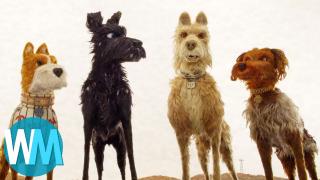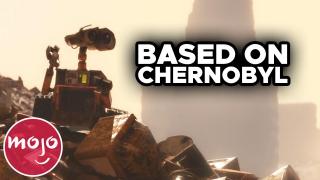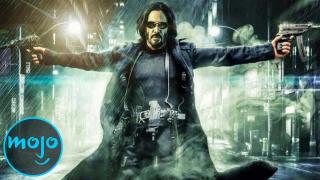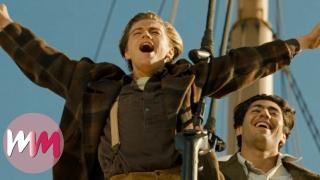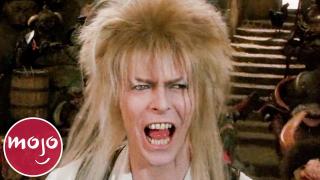Top 5 Fun Facts About Bambi
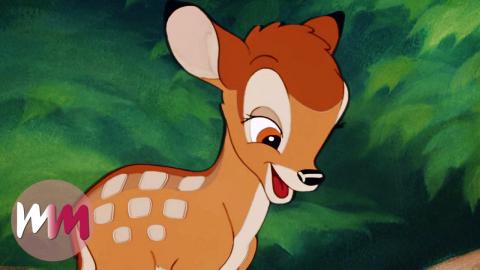
Bambi is everyone's favorite deer! This Disney classic was made in 1942 but its still as loved today as it was back in the 40s. In today's countdown we're going to be taking a look at the Top 5 Facts about Disney's “Bambi” you didn't know about! Did you know that some of its animation has been reused? In Disney's early days, it was common practice to reuse bits of animation in different movies to save the artists time and the company money. Because creating each cel was so time-consuming, it made sense to slightly alter existing illustrations rather than creating new ones from scratch. Did you know that kids voiced the young animals? Walt Disney had a different idea for this film, however, insisting that Bambi and the other woodland creatures be voiced by young children. In fact, Thumper's character was largely formed around the child who provided his voice, using his distinctive intonation to inspire the lines that the writers came up with.
#5: Some of Its Animation Has Been Reused
Top 5 Isle of Dogs Facts You Didn't Know
In Disney’s early days, it was common practice to reuse bits of animation in different movies to save the artists time and the company money. Because creating each cel was so time-consuming, it made sense to slightly alter existing illustrations rather than creating new ones from scratch. In fact, this has been done with “Bambi” more than any other film, especially when it comes to leaves and birds. Images of Bambi’s mother in particular have popped up in “Beauty and the Beast,” “The Sword in the Stone,” and “The Jungle Book.” She can also be spotted with her son in “The Rescuers.” Huh, we wonder where Bernard and Bianca were when Bambi’s mom needed rescuing?
#4: Kids Voiced the Young Animals
Top 10 Kids' Movie Facts That Will Ruin Your Childhood
During the inception of animated features, adults were typically recruited to provide all the voices, even when it came to portraying children. This is still common today, as children’s voices are bound to change over time. Walt Disney had a different idea for this film, however, insisting that Bambi and the other woodland creatures be voiced by young children. In fact, Thumper’s character was largely formed around the child who provided his voice, using his distinctive intonation to inspire the lines that the writers came up with. This made it all the more significant when Bambi and his friends ultimately grew up, marking the beginning of a new chapter in their lives.
#3: The Animators Studied Real Deer
Top 10 Things Only Real Matrix Fans Would Know
The animators assigned to work on “Bambi” put in a lot of work to ensure that their on-screen depictions of deer would be as accurate and realistic as possible. The team knew that deer would be particularly difficult to use as characters because of the way their facial features are formed. Not only did the animators take trips to the Los Angeles Zoo to study the critters, but Disney also had a small menagerie set up in the studio where ducks, rabbits, owls, skunks, and two baby fawns were kept for the illustrators to observe. Of course, the fawns were named Bambi and Faline.
#2: The Movie Has Very Little Dialogue
Top 10 Facts about Titanic the Movie
“Bambi” runs for an hour and ten minutes, which isn’t much shorter than the typical Disney movie. The actual script, however, was only a handful of pages long. The entirety of the film’s dialogue makes up less than a thousand words in total, which makes sense considering how many quiet and ambient scenes there are in the film. Disney used a similar technique in 2008’s “Wall-E” when they included almost no dialogue at all in the movie’s first act. It just goes to show that when it comes to animation, sometimes showing is better than telling.
#1: The Movie Has an Unconventional Villain
Top 20 Epic Movie Villain Songs
While most Disney movies and children’s movies in general have clear villains to outline the divide between good and evil, the antagonist in “Bambi” is a little different. The faceless threat in this film is “man,” but humans never actually appear on screen. In the movie, characters utter the phrase, “man in the forest,” to warn others that there are predators nearby. However, in the Disney studio, this expression took on a whole different meaning. The crew would reportedly whisper it when Walt was coming down the hallway to warn the group to get to work.


